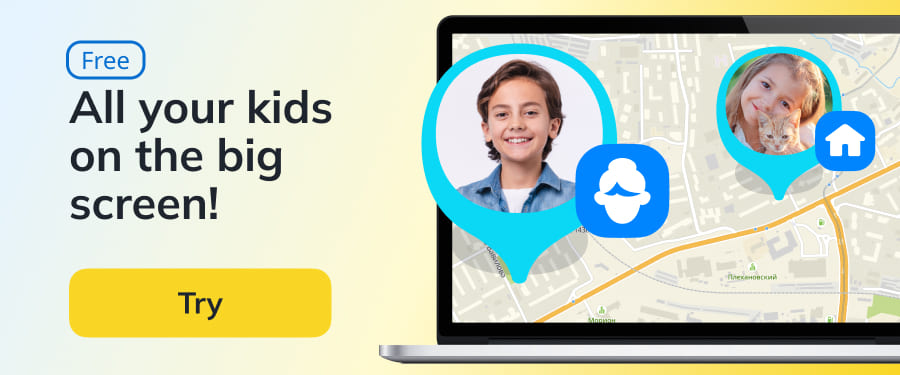Behavior Chart for Kids: A Simple Tool for Positive Parenting
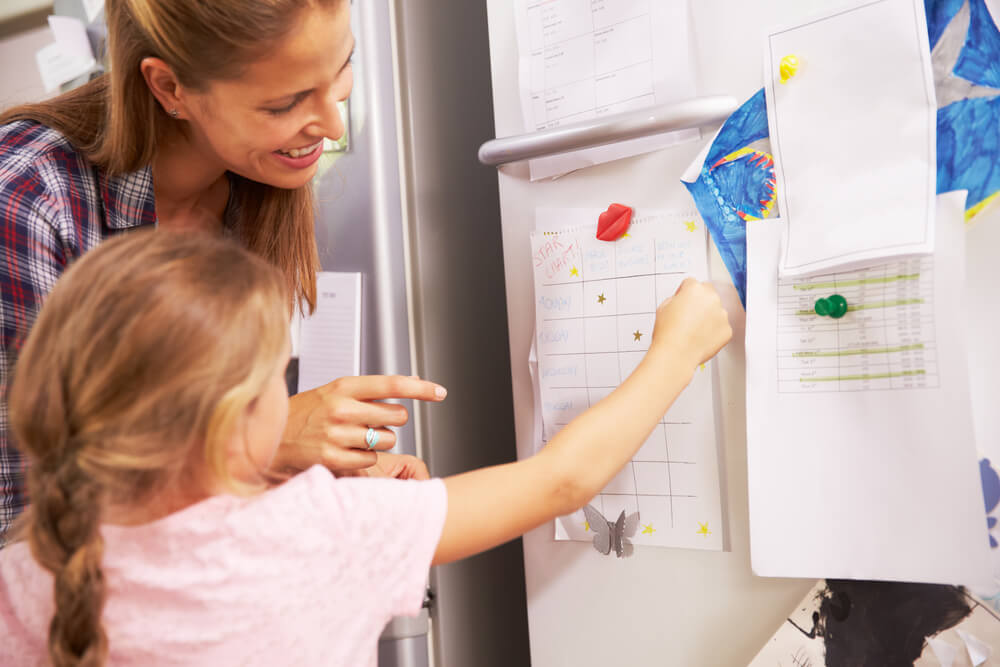
Parenting is no walk in the park, and the struggle to manage kids’ behavior can feel like a never-ending saga.
If you’re tired of repeating yourself (and who isn’t?), it might be time to bring a behavior chart for kids into your home or (hey, teachers!) even your classroom.
Think of it as your personal cheerleader in the game of parenting—fun, motivating, and surprisingly effective!
Contents:
- What Is a Behavior Chart for Kids?
- Types of Behavior Charts for Kids
- How to Use a Behavior Chart Effectively
- Behavior Chart Examples
- Common Mistakes & How to Avoid Them
- FAQs
What Is a Behavior Chart for Kids?
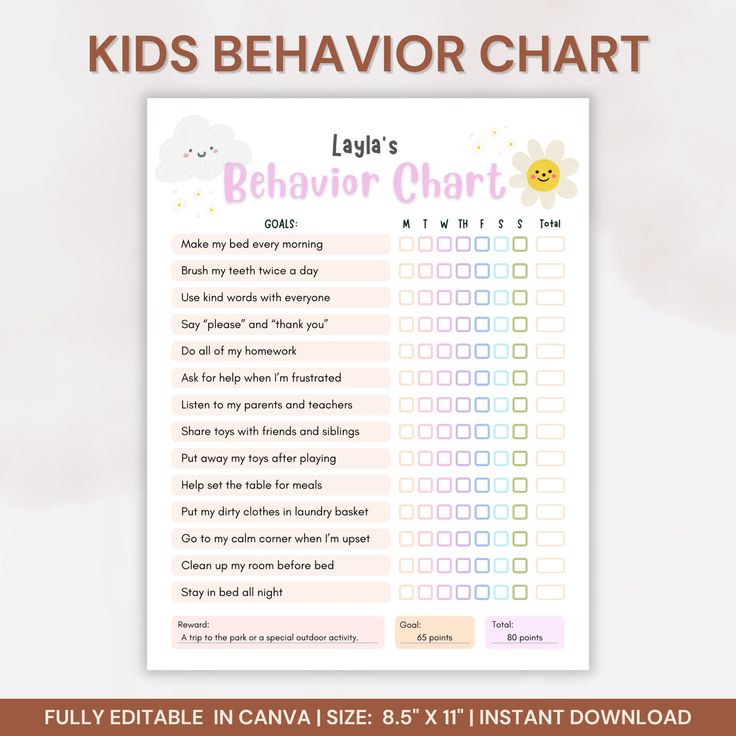
etsyfr/pinterest.com
At its core, a behavior chart for kids is a visual tool designed to track and encourage positive behavior. It serves as a simple yet impactful way to help children stay on track by turning good habits into something tangible they can see and celebrate.
Here’s how it works.
- First, you set clear behavioral goals—whether it’s completing homework on time, using the potty, keeping toys in their rightful place, or brushing those tiny teeth twice a day.
- Then, as kids achieve these goals, the chart keeps a record of their progress, typically using visible markers like stickers, stars, or checkmarks. To keep motivation alive, you can tie their progress to personalized rewards—nothing fancy, just a treat or extra playtime often does the trick.
Behavior charts play a key role in positive parenting. They focus on encouraging good actions rather than punishing poor ones, helping your child associate effort with positive outcomes. Think of it as coaching instead of “policing.”
Parents often find these charts a great way to reinforce discipline without it feeling like punishment. For kids, they turn goal-setting into a fun, visual experience—making it a win-win for everyone!
Types of Behavior Charts for Kids
Not all behavior charts are created equal. Depending on your child’s age and needs, certain types might work better than others. Below, we’ve broken down the most popular kinds to help you decide.
Daily Behavior Chart
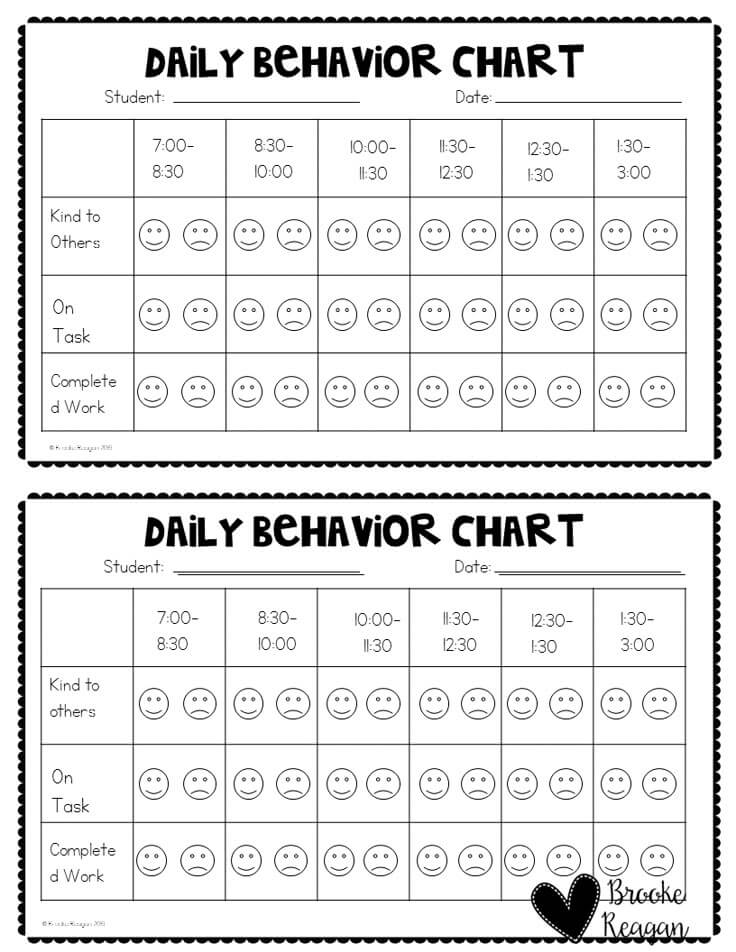
brookeann34/pinterest.com
A daily behavior chart is exactly what it sounds like—it tracks behavior on a day-to-day basis. This type works well for routine-based tasks like brushing teeth, getting dressed, or completing homework. Children get immediate feedback, which helps them connect their actions to outcomes in real time.
For example, if your child remembers to put away their toys and follows bedtime routines without a hitch, they get a star for the day. If not, well, tomorrow’s a new opportunity to try again!
Daily charts are particularly effective for younger children who thrive on immediate reinforcement. Plus, they help parents form quick feedback loops, which is key for early habit-building.
Weekly Behavior Chart
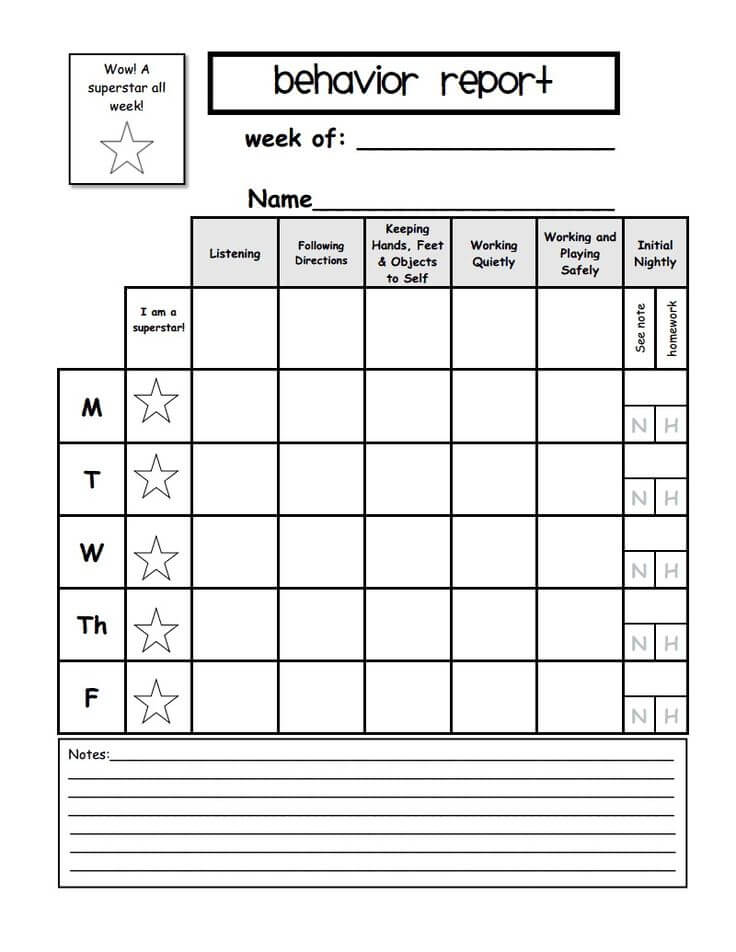
leona_lisa/pinterest.com
If you’d rather focus on long-term progress, a weekly behavior chart might be more your style. These charts spread the feedback over several days, perfect for tracking broader goals like improving listening skills or reducing screen time.
Weekly charts allow kids to focus on developing habits that require consistency over time. For instance, you could set a goal for your child to limit their tablet use to 30 minutes per day. At the end of the week, if they’ve stuck with it, they earn their reward.
While it requires a bit more patience, weekly charts can teach valuable lessons about perseverance and delayed gratification—skills that will serve your kid well in life.
Sticker or Reward Chart
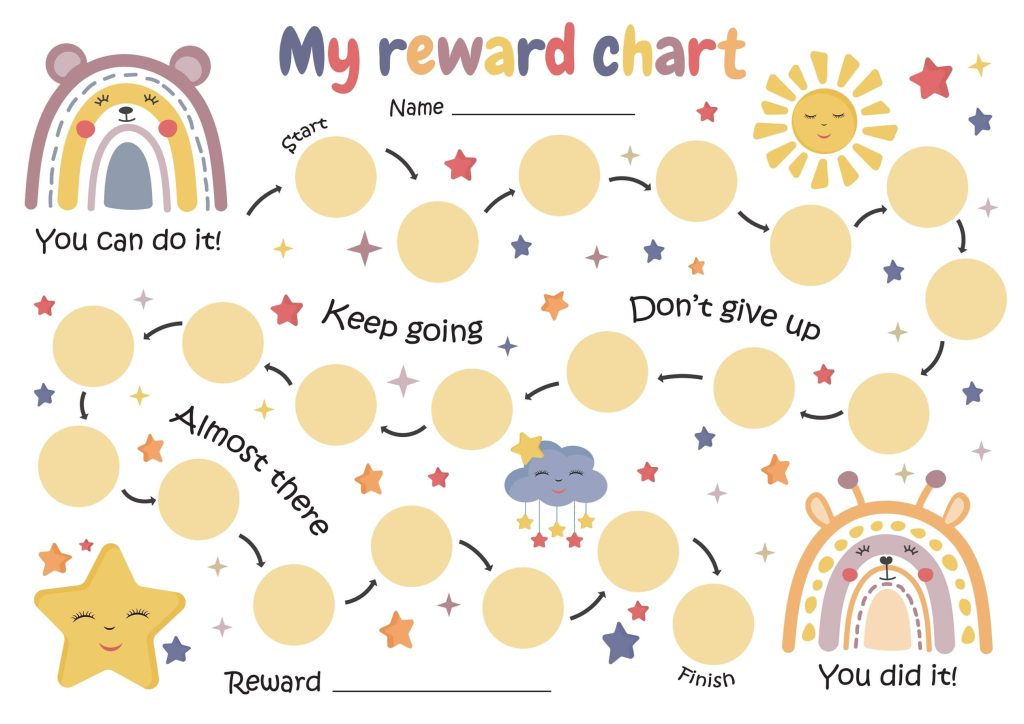
Kreativer Hase/Shutterstock.com
Sticker or reward charts are a tried-and-true method for toddlers and preschoolers. Here’s the gist—your child earns a sticker, stamp, or checkmark for each completed task. Once the chart is full, they can exchange their progress for a reward.
The visual appeal of stickers is a magical motivator for younger children. Whether it’s a colorful star or a shiny smiley face, each sticker feels like a mini celebration. Pro tip: Choose stickers or marks that tie into what excites your child—dinosaurs, princesses, or race cars, for example.
Sticker charts are fabulous for building enthusiasm. They’re easy to customize, too, so you can start small and increase the challenges as your child grows.
Chore Chart
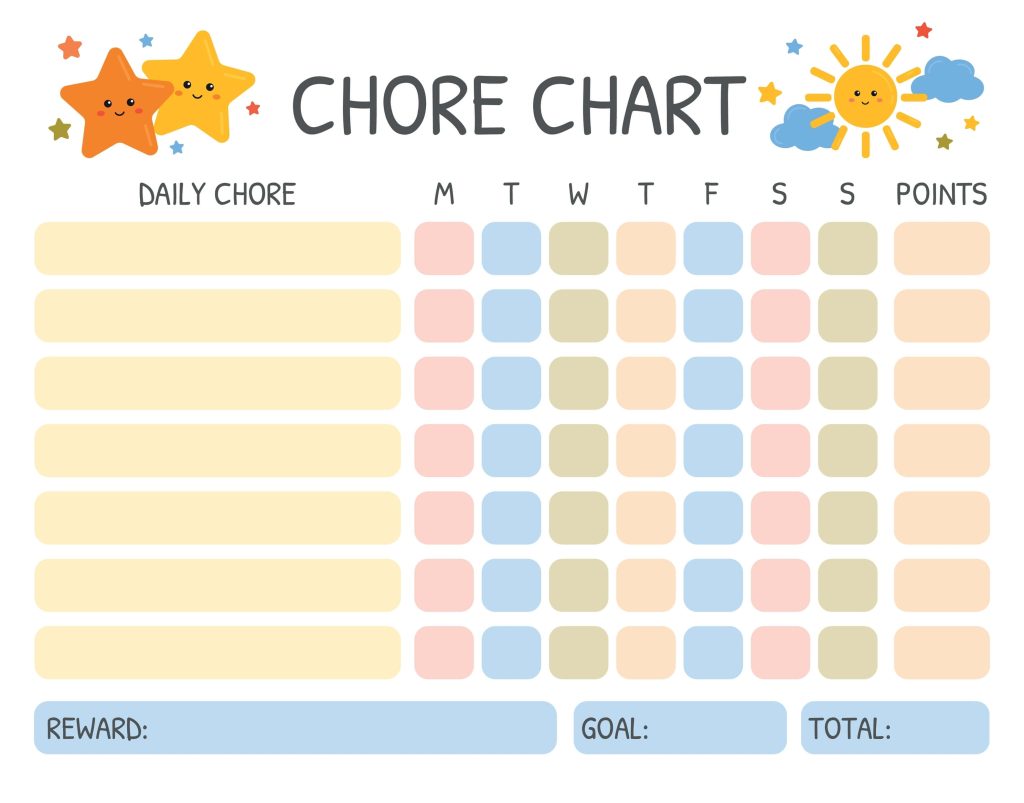
Kreativer Hase/Shutterstock.com
If you’re tired of tripping over toys or searching for someone to feed the dog, chore charts are your answer. These are behavior charts with a specific focus on household responsibilities—teaching kids accountability for daily tasks.
Examples of chores to include are tidying their room, helping set the table, or watering plants. For kids, having tasks laid out in a chart makes everything feel more achievable. Pro tip: Pair each chore with a reward to make the process less of a “drag” and more of a game.
Chore charts are particularly handy for families with multiple kids—visual clarity ensures no sibling overlap (or finger-pointing!).
Printable Behavior Charts
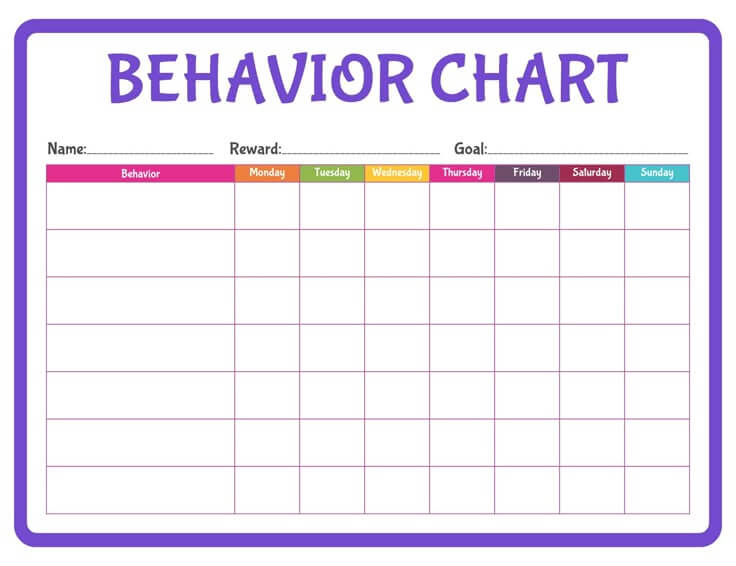
Printablee/pinterest.com
Here’s the secret sauce to make your life easier—printable behavior charts. These downloadable templates come pre-designed, offering parents a hassle-free way to get started immediately.
From bright, playful designs for toddlers to more structured options for older kids, the variety is endless. Whether you’re tracking chores, routine habits, or long-term goals, you can easily find a chart that fits your needs online. Best part? Many websites offer free printable behavior charts to save you time and effort.
Having a ready-to-use chart means you can start focusing on what matters—helping your child succeed. Google “free printable behavior charts” and prepare to be amazed at the options available.
How to Use a Behavior Chart Effectively

Daisy Daisy/Shutterstock.com
Ever feel like you’re stuck on repeat reminding your child to pick up their toys or finish their homework? A behavior chart for kids might just be the superhero you never knew your fridge needed.
But how do you actually make it work? Here’s the lowdown on turning those colorful charts into your secret parenting weapon.
- The key to a great daily behavior chart is consistency. Before you even start, identify the behaviors you want to track or encourage. Is it helping set the table? Completing homework without complaints? Being kind to siblings? Choose a handful of specific, realistic goals that are age-appropriate for your child.
- Once you’ve got those goals, make them fun and clear. Instead of a boring “Do chores” goal, spice it up with “Earn points to become today’s Cleanup Champion!”
- Use stickers, stars, or even smiley faces to mark achievements—it’s amazing what kids will do for a simple, shiny star.
- Don’t forget to follow up with positive reinforcement. A hug, a high five, or a treat for meeting goals can go a long way.
Finally, involve your child in the process. Explain what the chart is for and why it will help. They’ll feel more motivated if they understand how it’s benefiting them. Keep the tone upbeat and the goals positive—you want the chart to feel encouraging, not like a chore in itself!
Behavior Chart Examples
If you’re searching for the perfect behavior chart for your own kids or even for your students, you’re in luck. From free printable behavior charts to super-creative DIY ideas, there’s something for every style of parenting.
Printable Options
For a quick and easy solution, check out websites like KiddyCharts and Reward Charts 4 Kids.
These sites offer free printable behavior charts with themes ranging from princesses to superheroes. If you’re feeling fancy, some editable printables even allow you to customize the goals for your child.
This color-coded printable behavior chart is an excellent option that’s easy to customize based on your needs.
DIY Masterpieces
Feeling creative? Grab some markers, construction paper, and stickers to make a personalized behavior chart that screams you.
Create a weekly grid, and label columns for tasks like “Brush Teeth,” “Be Polite,” or “Finish Dinner.” Glitter is optional but highly recommended if you really want to wow your little ones!
Pro tip? Consider customizing a behavior chart like this one with the age and ability of your little one!
Magnetic and Dry-Erase Boards
For a reusable option, grab a whiteboard or magnetic board. These are fantastic for tracking behaviors without wasting paper. Use colorful magnets or dry-erase markers to update the chart daily. Bonus? They’re easy to change up as your child grows or their goals shift.
Here’s a simple chart you could easily transpose onto a whiteboard (or use as a printable, if that’s easier).
Each time you download or create a chart, remember that kids love themes and personalization. Whether it’s Peppa Pig or dinosaurs, tailoring the chart to their interests can make it even more motivating.
Common Mistakes & How to Avoid Them

Prostock-studio/Shutterstock.com
Behavior charts can feel like magic when they work—but they can also flop if they’re not used correctly. Here are some common missteps parents make and how to sidestep them.
Mistake #1: Too Many Goals
It’s tempting to track everything, but less is more. A long list of tasks can overwhelm both you and your child. Stick to three to five key behaviors, and once those are mastered, you can add new goals.
Mistake #2: No Follow-Through
A behavior chart is only effective if you’re consistent. Forgetting to update it daily, or not rewarding your child as promised, can undermine its power. Set a reminder on your phone to check and update the chart every day.
Mistake #3: Making It All About Punishment
A behavior chart should focus on positive reinforcement, not what happens when goals aren’t met. Punishments can discourage kids, whereas rewards make them feel accomplished.
Mistake #4: Unrealistic Expectations
Sure, we’d all love it if our five-year-old could sit quietly at the dinner table for an hour straight. But is that realistic? Probably not. Set goals that align with your child’s age and developmental stage.
Mistake #5: Ignoring Feedback
Your child’s response to the chart matters. If they’re not interested in it or the rewards don’t motivate them, ask for their input. Sometimes tweaking the goals or rewards can make all the difference.
Avoiding these classic pitfalls will keep your chart on track and your child excited about achieving their goals.
Behavior charts are a great way to encourage positive habits, but what about when your child is outside the house? With the Findmykids app, you can stay connected no matter where they go. Get real-time location updates, set safe zones, and even receive alerts when they arrive at school or activities.
⠀
Download Findmykids today and enjoy peace of mind while supporting your child’s growth—both at home and beyond!
A behavior chart for kids is a simple yet powerful tool to help you track positive habits and guide your child’s growth one day at a time. Whether you download a free printable behavior chart, go DIY, or use a magnetic board, the goal is the same—to encourage and celebrate good behavior in a fun, engaging way.
Stickers? Check. Clear goals? Check. Open communication with your child? Double check. You’re officially ready to nail this parenting strategy.
Want some help designing the perfect custom behavior chart? Or looking for more parenting hacks? Drop a comment below, and don’t forget to share this blog with friends who might need a little stickering inspiration!
FAQs
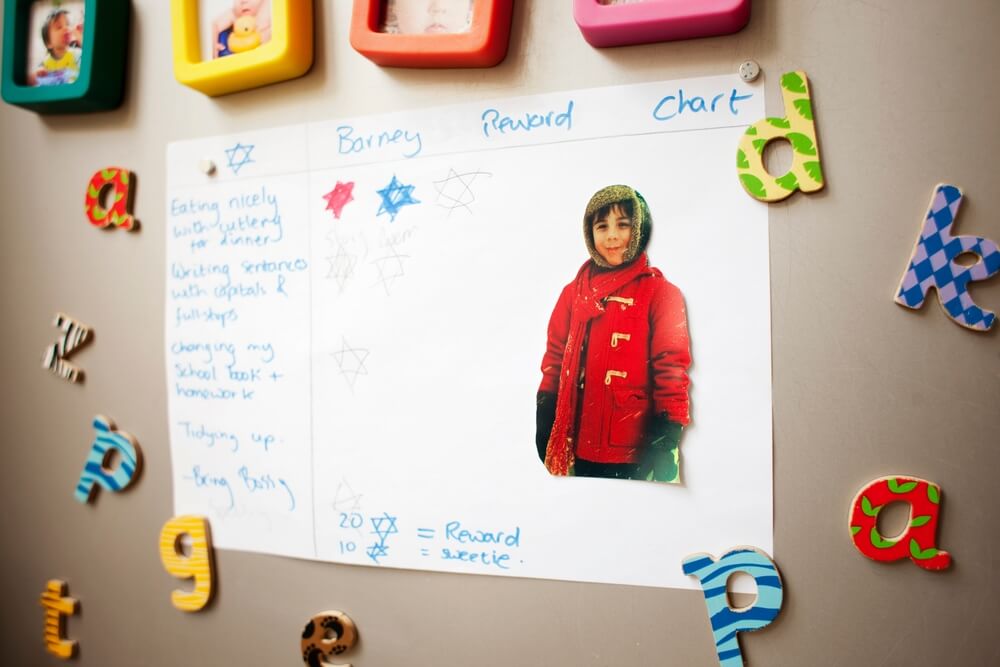
Connect Images – Curated/Shutterstock.com
Do behavior charts work for kids?
When used correctly, behavior charts can be an excellent tool for reinforcing positive habits in children. They’re particularly effective with younger kids who thrive on routine and visual rewards.
How do I create a behavior chart for my child?
Start by identifying specific behaviors you want to encourage, then choose a format (printable, DIY, or reusable). Add fun visuals like stickers or magnets, and explain the chart’s purpose to your child to get them on board.
What should be included in a behavior chart?
A good chart includes specific behaviors you’re tracking, a rewards system (like stickers or points), and space to note progress. You can also add a “daily behavior chart” feature to track tasks day by day.
Do behavior charts work for ADHD?
Absolutely! Behavior charts can be incredibly helpful for kids with ADHD as they provide structure, consistency, and clear rewards. Just make sure the goals are simple, short-term, and achievable to keep them motivated.
What to do instead of a behavior chart?
If behavior charts don’t work for your family, consider alternatives like verbal praise, token economies, or engaging in regular one-on-one time to encourage positive behavior.
Cover image: Monkey Business Images/Shutterstock.com
Проверьте электронный ящик





